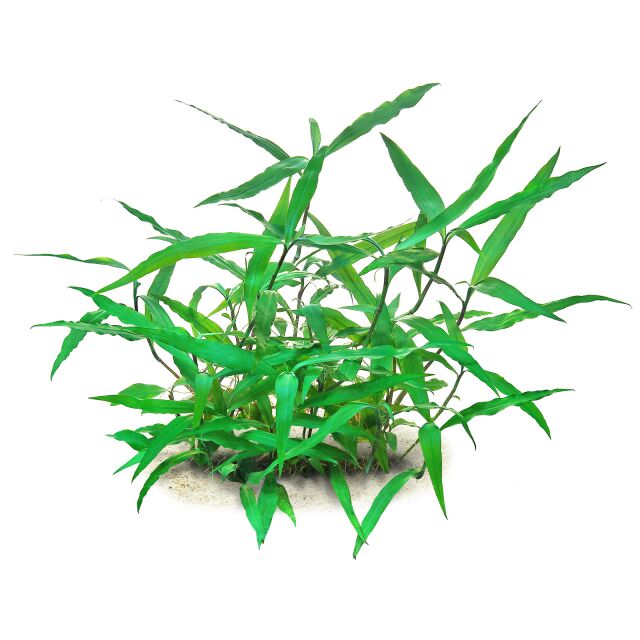
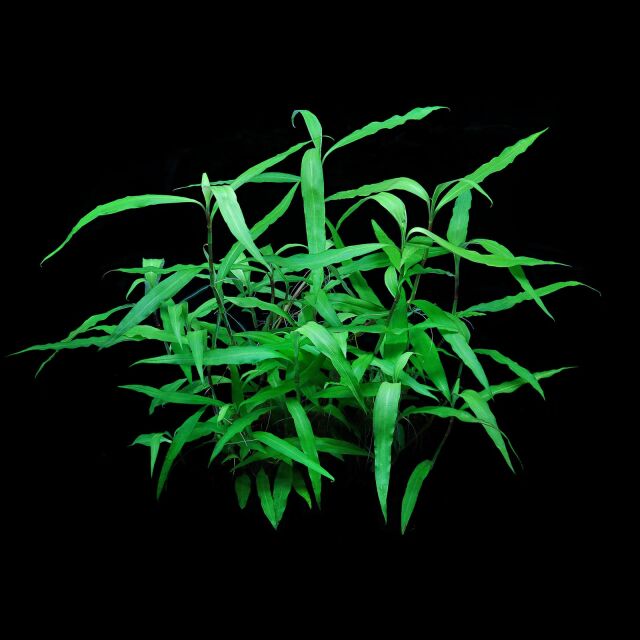
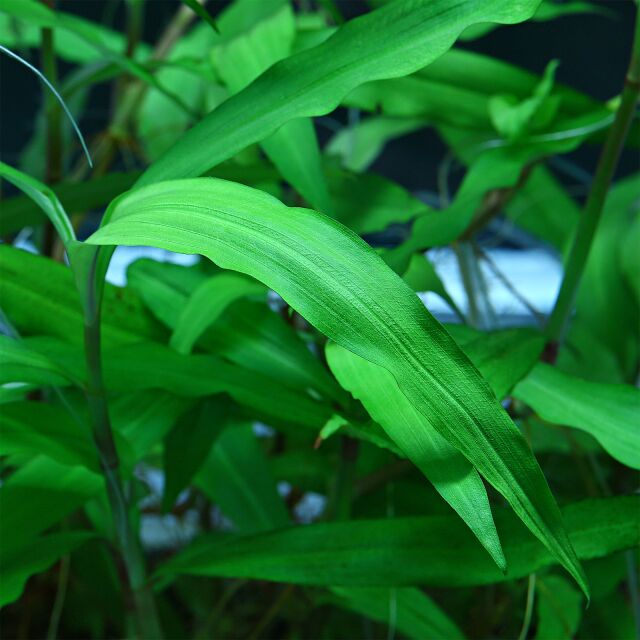
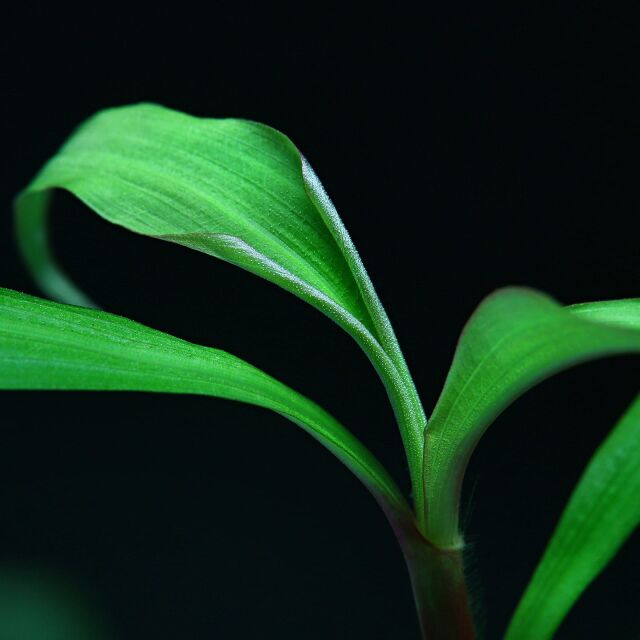


Floscopa cf. glomerata
- Hardly known Commelinaceae from Africa
- Light green leaves
- Especially suitable for the midground
Item question
We’re here for you!
Please enter your question and e-mail and we’ll contact you as soon as possible. It usually takes us up to 24 hours during business days to respond.
Thank you for your question!
Thank you, we’ll get in touch!
Close window
You already sent us a question.
Please wait a few minutes
Description
This plant from the Dayflower family (Commelinaceae) was found in the Netherlands in a plant shipment from Cameroon. Up to now, it is apparently virtually unknown in the aquarium hobby. It is probably Floscopa glomerata, an amphibious species of wet places such as riversides and swamps that is widely distributed in tropical Africa. Until our plant is reliably determined, we write the name with a "cf.". There are several further African Floscopa species that likewise grow in wetlands.
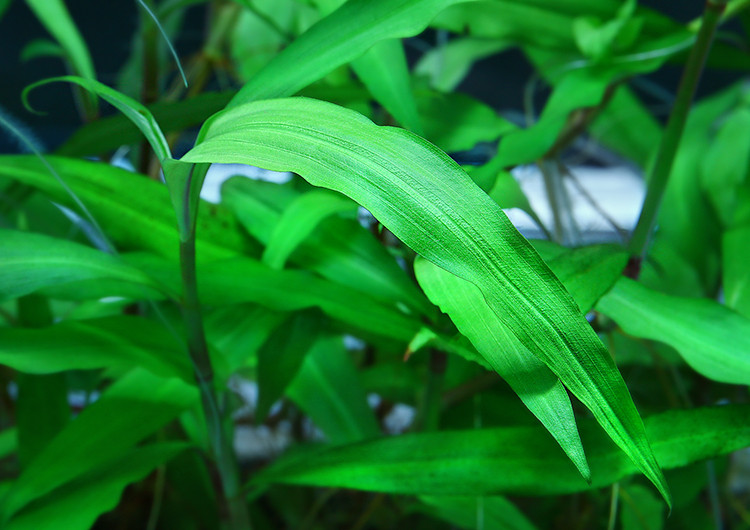
Structure of the submerged leaves
Floscopa cf. glomerata is able to grow above and under water. In contrast to Floscopa cf. scandens, it does not grow strictly upright. The older stem parts lay down, rooting at the nodes, while the shoot tips grow ascending. Side shoots appear on the nodes. The leaves are narrowly lanceolate, variably shaped, mostly narrower in their submerged form, slightly wavy and horizontal to arching. They get about 12 to 14 cm long and 1.5 cm wide. The stems are brownish, the leaves medium to - especially in the submerged form - light green, partly also with brownish tones. The growth is slowly to moderately fast.
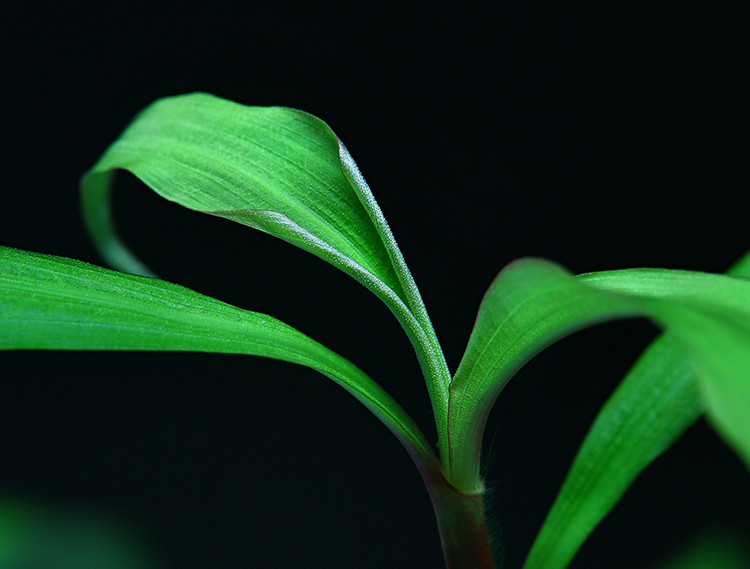
Young submerged leaf - the underside is densely covered with stomata, creating a silvery-white colour impression.
We recommend for Floscopa cf. glomerata a good macro- and micronutrient supply, also via the substrate, and CO2 addition. Lack of both may lead to quite short-lived leaves. Moderate lighting is sufficient. Its temperature optimum is still unknown to us, however usual indoor temperatures above 20 °C make sense as the plant comes from the tropical zone. As well as other stem plants, it can be propagated by cuttings of the shoot tips and side shoots. The emersed cultivation succeeds in a moist to wet substrate; we recommend a higher humidity of about 60 %.
With its spreading, loose growth, Floscopa cf. glomerata fits well as a bush in the aquarium midground. It does not grow fast towards the water surface and mostly gets about 20 cm tall. With its narrow, long leaves, it has a more delicate appearance than Floscopa cf. scandens. The plant appears especially interesting for natural setups that imitate a waterside habitat and where the plant is also allowed to grow emersed. Also making the plant bloom would be worth a try. Conspicuous inflorescences with numerous small purple flowers are known from the species Floscopa glomerata.
Wasserpflanzen

Aquasabi is our own brand, under which we offer high-quality products with a very good price-performance ratio. Carefully selected CO2 diffusers, CO2 bubble counters or lily pipes are just some of the items we sell under this brand and which will surely add to the value und the beauty of any aquascape. For this reason, many aquascapers and planted tank enthusiasts use products by Aquasabi.
Besides the good price-performance ratio, our main focus is on the satisfaction of our customers. This is the reason why our doors are always open for those who need help with our products.
When it comes to special aquatic plants, water plants from Aquasabi are just the thing for you. We offer rarities from our own cultivating tanks or import them specifically. These plants are otherwise hard to come by, and most of them cannot be purchased from other shops. We have high quality standards, which make Aquasabi plants a good choice for aquascapers, planted tank enthusiasts and aquatic plant collectors who want to enrich their tanks with rare aquatic plants. Special mosses, particular stem plants, hard-to-come-by ferns or very rare forms of the genus Bucephalandra are only a few of the plants we are proud to offer.
Manufacturer information
| Manufacturer | |
|---|---|
| Name | Aquasabi GmbH & Co. KG |
| Street | Salzdahlumer Str. 196 |
| City | 38126 Braunschweig |
| State | Niedersachsen |
| Country | Deutschland |
| info@aquasabi.de | |
| Website | www.aquasabi.de |
General information
| Item no. |
|
| EAN | |
| Weight | 0,05 kg |
| Shipping weight | 0,10 kg |
Customers ask customers
You have questions about this product? Ask other customer or our support team about this product!